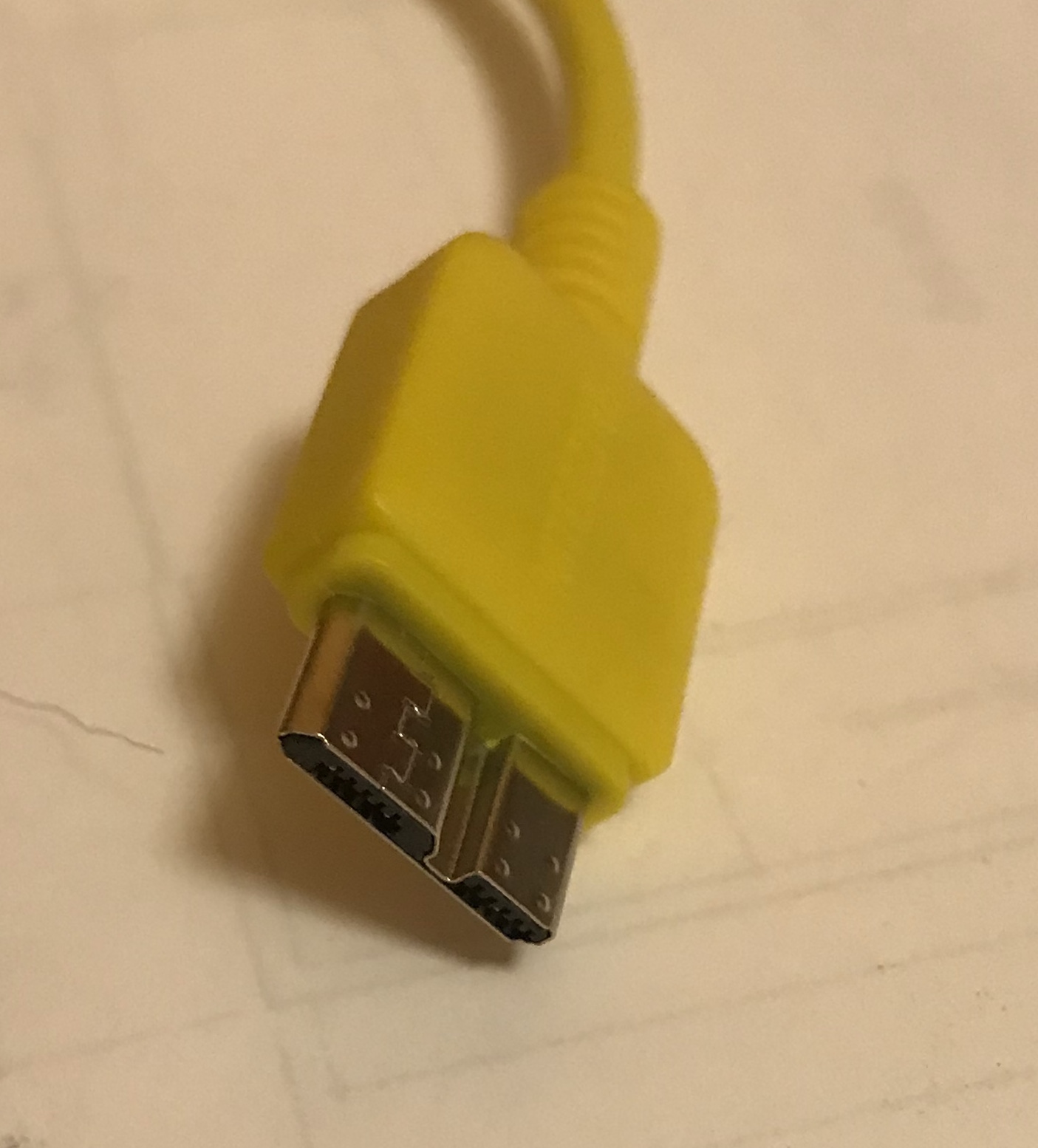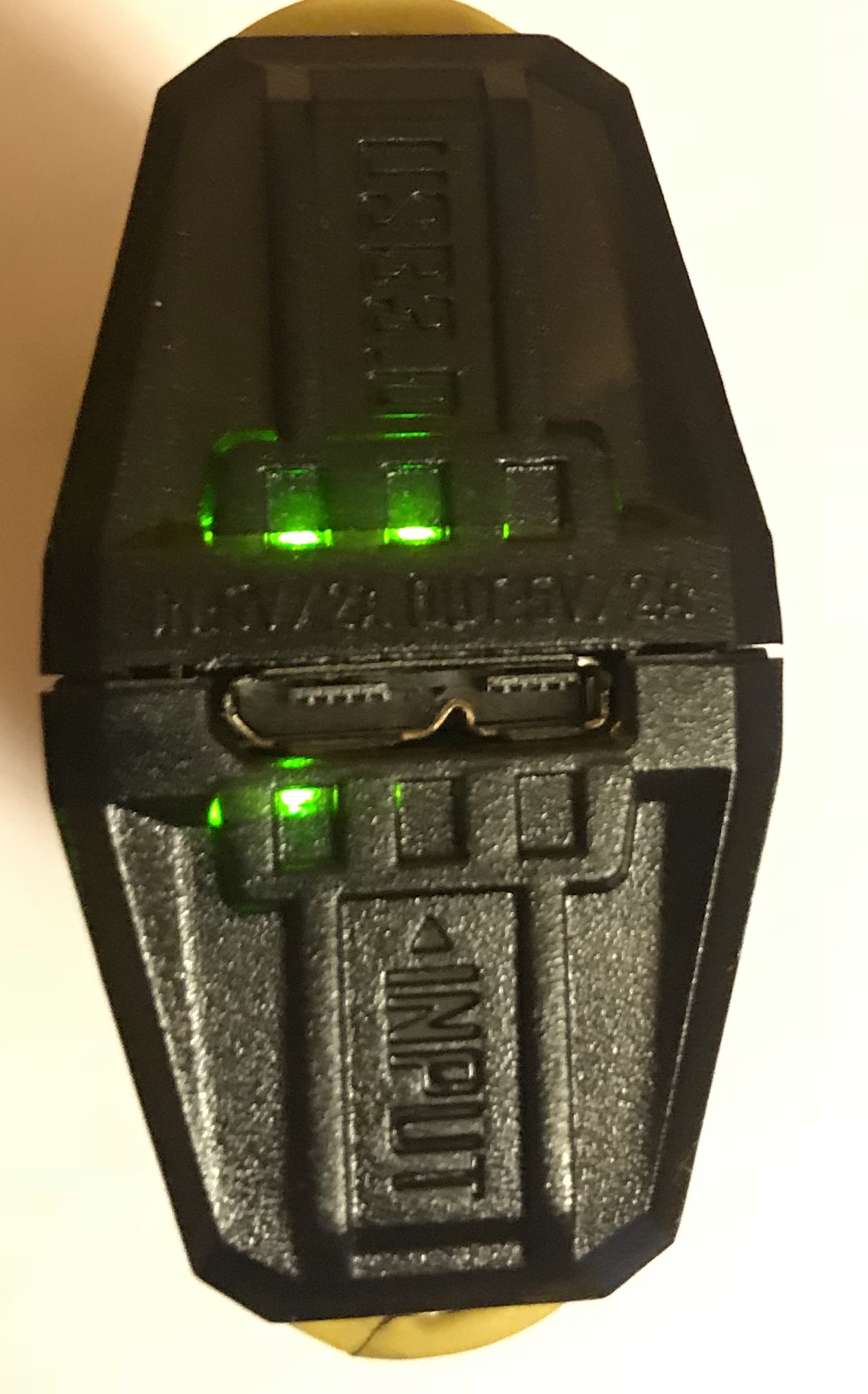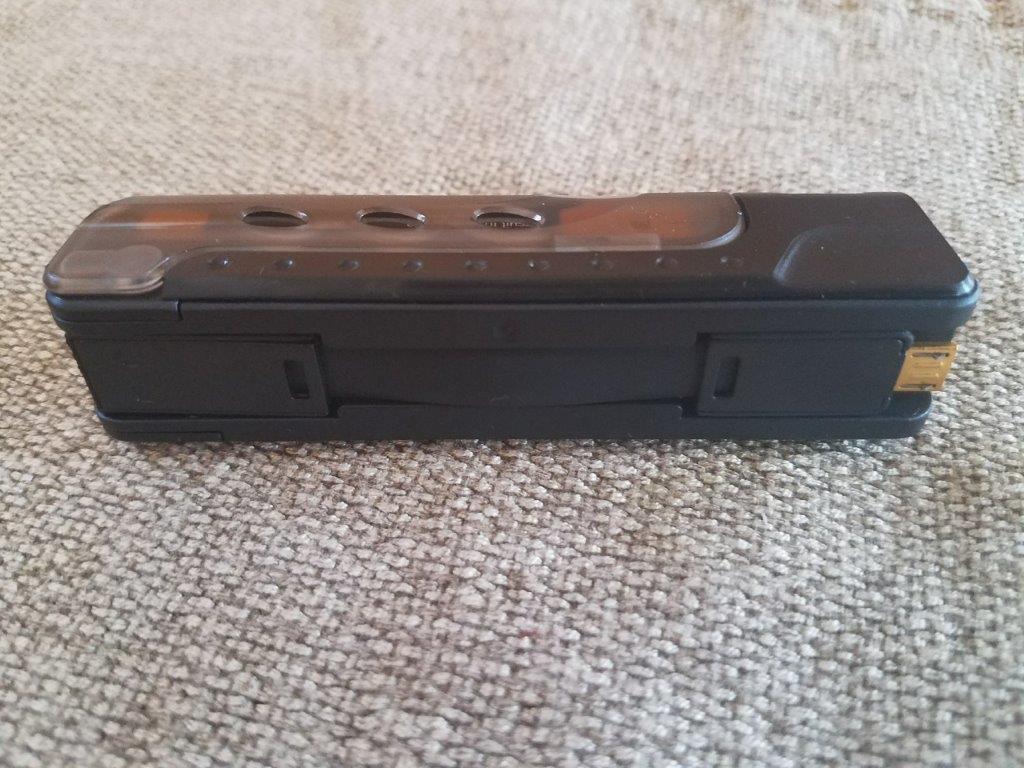Topic
Battery Bank for charging electronics
Forum Posting
A Membership is required to post in the forums. Login or become a member to post in the member forums!
Home › Forums › Gear Forums › Gear (General) › Battery Bank for charging electronics
- This topic has 33 replies, 13 voices, and was last updated 5 years, 7 months ago by
 Christoph Blank.
Christoph Blank.
-
AuthorPosts
-
Mar 15, 2018 at 8:08 pm #3524818
I’m planning an 11 day trip, and looking for options for charging headlamps, camera, etc. I’ve been using a Nitecore F1 battery bank with one 18650 battery for most shorter trips, and considering just bringing more batteries for it, but thought I’d see what else is out there. They claim a weight of 30g for the charger/battery bank and 48g for each 3400 mAh battery, which seems to be pretty light compared to most one-piece battery banks out there (plus it’s modular, just bring as many charged batteries as you need for a trip!) Of course, the cable is extra weight, but you’re bringing that in any case.
Their flashlights and headlamps are overkill for backpacking, but this trip is a river trip, so we’re not worried about weight! I mostly just want to have a system that is good for backpacking trips.
Anyone else using something similar? Other good options?
Mar 15, 2018 at 9:01 pm #3524839Ian,
If you are just discharging 18650 batteries in the field, that is a good option. If you will also charge in the field, the .5 A max input makes this a poor option. For a similar weight, the Lumintop LC1 will charge at 1.0 A. The spec says up to 1.2A input but I measured a max of 1.0 A.
Mar 15, 2018 at 9:16 pm #3524842A popular option is an Anker 10,000 mAh power bank – 8 ounces
That would be similar to yours with 3 18650 batteries – total weight 174 g = 6.1 ounces
Your Nitecore looks pretty good based on weight
Mar 15, 2018 at 9:18 pm #3524844Thanks, Richard. At this point, I wouldn’t be recharging in the field, just discharging. As far as I can tell, it’s more weight efficient to bring more batteries rather than try to recharge with a solar panel. I suppose at a certain length of trip, solar makes sense, but with a 4 year old in tow, we’re probably not doing many trips longer that 11 days!
Mar 15, 2018 at 9:25 pm #3524847Jerry – yeah, the thing I like about the Nitecore (or similar separate charger/battery setups) is that you can adjust the number of batteries you need. I rarely need more than one battery, and on shorter trips it’s really a “just in case” extra battery like we used to do in the old days for our headlamps. For most 3 day trips, my phone (just used for GPS), headlamp and camera batteries don’t really need recharging. One battery and charger is under 3oz.
For longer trips, I can bring as many extra batteries as are warranted.
Mar 16, 2018 at 2:37 pm #3524958A popular option is an Anker 10,000 mAh power bank – 8 ounces
Mine weighs 6.5 oz, with a mini cable.
Mar 16, 2018 at 3:27 pm #3524973mine weighs 7.85 ounces, 8.15 ounces with 3D mesh bag inside plastic bag
I think I have an older one
I better buy a new one to save 1.5 ounces : )
Mar 17, 2018 at 11:33 pm #3525219I’ve seen references in the past here for the ENB 1A 1/2*18650 Li-ion Battery USB Emergency Charger Power Bank. It can use either one or two 18650 batteries and be charged by USB, or provide USB power to other devices. [https://www.fasttech.com/products/1421/10002784/1535101-enb-1a-1-2-18650-li-ion-battery-usb-emergency]
I think it would be perfect, but it appears to be out of production. Anyone know if it’s still a good product and might be available soon?
Thanks
Mar 18, 2018 at 2:00 am #3525245It looks like Nitecore has a 2 battery model (F2). I don’t know if the product is better, but it’s a better name brand. I ordered the F1 and will check it’s charge speed with a solar panel I have and a USB charger. I’m interested in how fast they allow a charge. That may not be important to the OP.
Mar 18, 2018 at 2:32 pm #3525290I ended up buying two more batteries and an F2 came with the bundle for just a few dollars more. I’ll test charging time and report back.
One thing to note with the F2 is that it comes with a non-standard “USB 3.0 Micro B” cable. It sounds like this allows faster charging of the battery pack, but means you’d need to carry one more cable if you’re using the battery pack to charge regular Micro USB devices.
That said, you can use a regular Micro USB cable on the input side, it’s just slower. I’ll probably just bring the regular cable for most hikes and international travel, but I imagine that some through hikers might value the faster charge times.
Mar 18, 2018 at 6:52 pm #3525350The micro USB cable will probably work charging any device from the battery pack. Hopefully you’ll get a higher current charging and discharging. It’s probably just a higher gauge cable that will appease finicky charge circuits.
Mar 19, 2018 at 1:17 am #3525454means you’d need to carry one more cable if you’re using the battery pack to charge regular Micro USB devices.
Not necessarily, you can get little adapters to convert one USB-type plug to another, so you could still use the one cable to connect to two different types of USB ports. I’m going through this issue with my new cell phone, which takes USB-C and I have a bunch of micro USB cords. The adapters are cheap on Amazon, I’m sure other places as well.
Mar 21, 2018 at 2:35 pm #3526096<p style=”padding-left: 30px;”>Bob and JR: the charging cable (for the input side) is a different connector than a standard micro usb:
 </p>
</p>
You can use a standard USB cable for the input (the left side of the connector in this photo is a standard micro usb) but they say it will charge more slowly. If quick charging of the batteries is a priority, bringing this 6” long cable is probably no big deal, but it is one extra thing.
Heres a pic Of the input connector on the charger. You can see where a standard micro usb can be inserted on the left.
 Mar 21, 2018 at 5:39 pm #3526138
Mar 21, 2018 at 5:39 pm #3526138Interesting. Not sure that’s a standard, but if it catches on it might replace the wall chargers and battery banks that use 2 USB ports to charge faster. I recently got a cheap USB volt/current meter on Amazon along with a new QC3 battery bank. Now I see that Anker IQ and QuickCharge 3 are not limited to 5V, but can go up to 9V and 2A over the standard USB cable. Maybe this is common knowledge, but I was not aware.
That means there are options, but the industry is definitely not driving common standards for these faster charging. If you are going to charge by solar or during short town stops, it means you can plan for a quicker charge, as long as the wall charger/solar panel and battery bank are compatible.
Mar 21, 2018 at 5:59 pm #3526140Bob,
That connector is standard; I have an external hard drive at home that uses that connector. However, I don’t think it will catch on, because it is superceded by USB C. USB C supports both higher current and voltage. There are now battery banks that will quick charge via USB C. You’ll need an appropriate cable and wall charger to realize those benefits.
That’s good for charging your battery during a stop in town on a through hike, but if you’re charging on the go from a solar panel, I think a regular micro-USB cable will be sufficient. The solar panel is only going to deliver so much current anyway.
Mar 21, 2018 at 6:57 pm #3526150Isn’t that the USB 3.0 micro-B? I have seen short cables, but not adapters, that can take USB 3.0 micro-B on one side.
Jun 18, 2018 at 12:41 pm #3542680Does anyone have advice on brands/models for 18650 batteries?
Jun 18, 2018 at 2:16 pm #3542689Ive been happy with the Nitecore Batteries I bought. Not cheap, but they get good reviews and seem to be working well for me at this point. They also come in a variety of capacities (and prices!)
Part of my reasoning for buying a more expensive name brand battery is that I often take only one, so I dont have anything else for a backup if it fails.
Jun 18, 2018 at 3:54 pm #3542710I’ve bought LG cells from IMR Batteries, but they sell many other brands.
Companies like Nitecore buy and rebrand batters from Sony, Sanyo/Panasonic, Samsung, etc, so there’s markup added. But if you buy OEM batteries off of, say, Amazon or eBay, you risk getting counterfeits that may not give you the capacity they advertise, or worse, may be defective or dangerous.
My internet searches turned up IMR Batteries as having a good reputation and reasonable prices for OEM batteries, but you may want to do your own research.
(The main reason I found them was I had a headlamp that didn’t fit a protected cell, but I was nervous about strapping a cell that could go bad to my forehead. I learned that certain chemistries of lithium ion batteries are safer than others, though at a cost of capacity. That research lead me to IMR batteries with a lower case ‘b’, meaning a class of lithium ion batteries. That in turn lead me to one company that sells such batteries).
Jun 18, 2018 at 5:10 pm #3542718I just received the new ARE-X11 by Fenix. I have not tested it yet – but seems ideal for what you need. It’s what I bought it for. River trips in Alaska to hook up to a solar panel during the day and charge my phone for GPS use at night. Weighs a bit more than the Nitecore at 50 grams, but you get a self contained cover for your battery and a cleverly clipped in cable with that weight. At first glance I like it a lot. No real tests yet as it was just released. I can add photos later or PM you photos if you want some. You can get the charger and a nice protected 3500 Ahm battery for 35 bucks all in at Fenix-store .com. They also often have coupon codes.
Jun 19, 2018 at 5:36 pm #3542838Doug, much appreciated, the Fenix ARE-X11 looks pretty great. I like the battery cover and self-contained cable, plus I have Fenix flashlights and trust the brand. May be just what I was looking for; thanks!
Jun 19, 2018 at 6:27 pm #3542852

 Jun 19, 2018 at 7:08 pm #3542857
Jun 19, 2018 at 7:08 pm #3542857Yeah – I’m a fan of Fenix lights too. Sold all my Surefire and now exclusively use Fenix with 18650 and 16340 batteries. Wish that charger took both – looking to see if I can rig something. Love the HM50R headlamp.
Jun 19, 2018 at 9:35 pm #3542868Doug,
The Nitecore F1 charger mentioned earlier charges both 18650 and 16340 batteries (among others). An even lighter option is the Nitecore LC10 (apparently not for sale yet) and the similar Olapic UC magnetic charger.
The LC10 should be nicer than the UC because (like the F1 and ARE-X11) it can both charge and discharge batteries, so you can use a battery to charge your phone, etc.
Aug 5, 2018 at 9:01 am #3549920If you, like me, had a phone that already uses USB-C – would you get the Nitecore LC10 or the Folomov A1? It would be interesting to use a solar panel as backup, although I know that that’s not very efficient.
I basically have:
- USB-C Phone
- 18650 Flashlight
- USB charger for Canon LP-E6 batteries
What I’m wondering is, since it always needs to convert the 3.7V of the 18650 to 5V, the Nitecore F2 might be more efficient, although heavier?
-
AuthorPosts
- You must be logged in to reply to this topic.
Forum Posting
A Membership is required to post in the forums. Login or become a member to post in the member forums!
Our Community Posts are Moderated
Backpacking Light community posts are moderated and here to foster helpful and positive discussions about lightweight backpacking. Please be mindful of our values and boundaries and review our Community Guidelines prior to posting.
Get the Newsletter
Gear Research & Discovery Tools
- Browse our curated Gear Shop
- See the latest Gear Deals and Sales
- Our Recommendations
- Search for Gear on Sale with the Gear Finder
- Used Gear Swap
- Member Gear Reviews and BPL Gear Review Articles
- Browse by Gear Type or Brand.

 </p>
</p>




